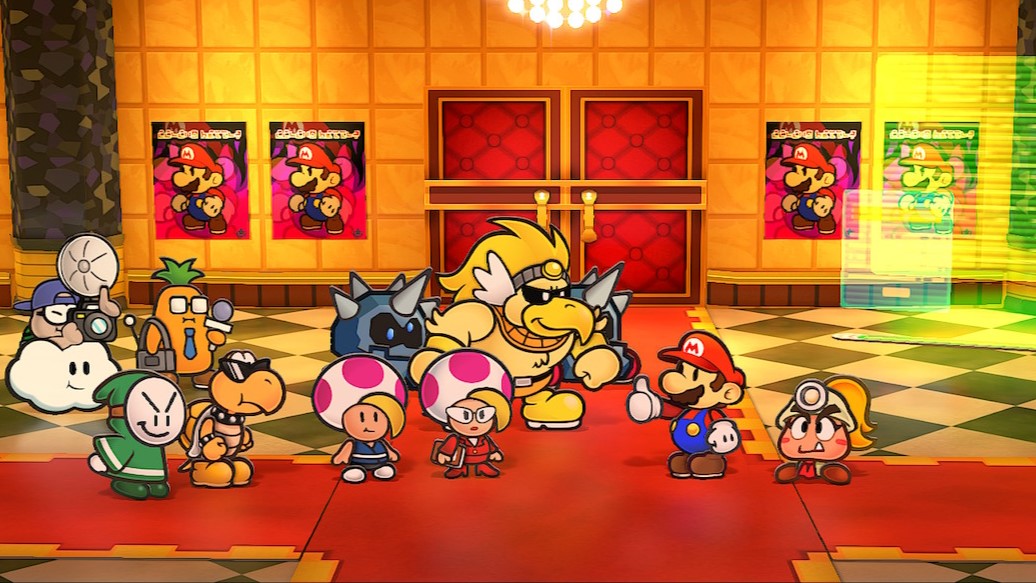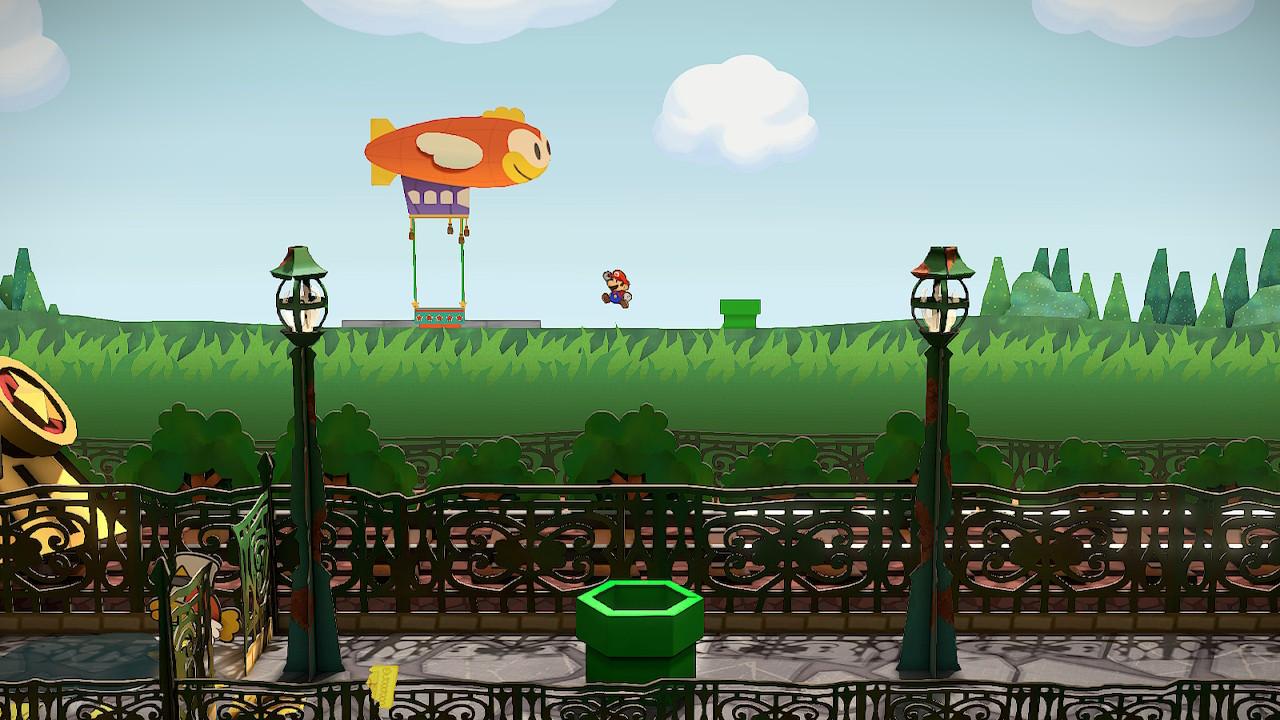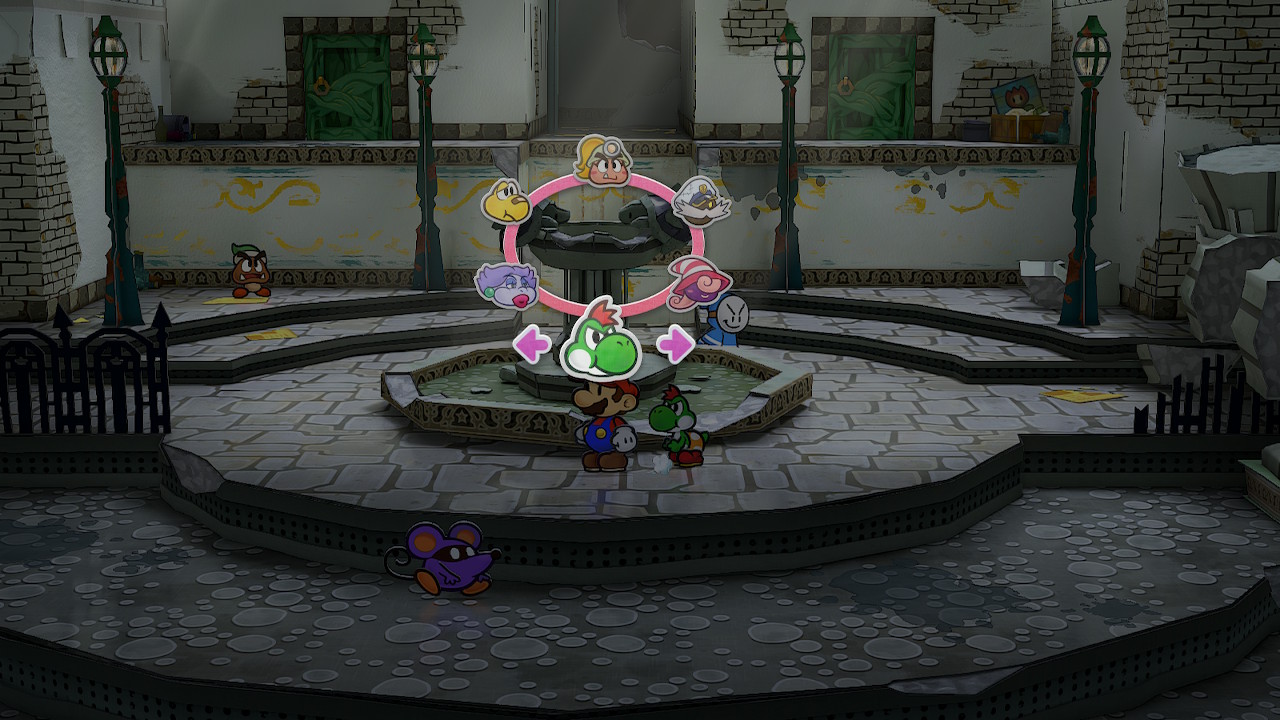
Platforms: Nintendo Switch
Price: $60
Release date: May 23, 2024
Genre: Role-playing, adventure
Paper Mario: The Thousand-Year Door is a remake of the classic 2004 GameCube game that adds upgraded visuals along with several quality-of-life improvements. Whether you played the original or this is your first foray into the world of Paper Mario, there’s something here for all players.
Nintendo and developer Intelligent Systems have taken great care to preserve the best aspects of the original while still adding some modern touches. Useful new features like Partner Ring and a hints system have been added, while a few dated elements have been cut.
Whether you’re a long-time fan of the series or you’re checking it out for the first time, my Paper Mario: The Thousand-Year Door review will show you why it’s one of the best Nintendo Switch games you can play right now.
Paper Mario: The Thousand-Year Door: The Basics
What is it? Paper Mario: The Thousand-Year Door is a remake of the 2004 role-playing game that follows Mario as he tries to find a hidden treasure buried underneath the town of Rogueport while rescuing Princess Peach from the X-Nauts.
Who is it for? Paper Mario: The Thousand-Year Door is well-suited to both fans of the original and role-playing game fans in general. There’s also quite a lot to do and unlock for completionists.
What is the price? Paper Mario: The Thousand-Year Door costs $59 on Nintendo Switch.
What other games has the developer made? From the original Mario Bros. to Super Metroid and Fire Emblem, Intelligent Systems is a first-party Nintendo developer that has made popular games for every one of the company’s consoles.
What games is this similar to? Paper Mario: The Thousand-Year Door is similar to other games in the series like the more recent Paper Mario: The Origami King as well as Super Mario RPG and Bug Fables: The Everlasting Sapling on PC.
A tainted treasure hunt

As with most Mario games, Paper Mario: The Thousand-Year Door sees Nintendo’s iconic plumber rescuing Princess Peach but this time there’s a twist. Before Mario sets out to rescue the princess, she lets him know via a letter that she stumbled upon a treasure map while visiting the town of Rogueport, which much like Mos Eisley in Star Wars, is filled with a less-than-reputable cast of characters, albeit in a more family-friendly way.
With this treasure map in hand, Mario sets sail for Rogueport where he runs into his first party member Goombella who, along with Professor Frankly, helps him uncover its secrets. The town itself was destroyed a millennia ago and the treasure map holds the secret to opening the Thousand-Year Door hidden beneath Rogueport and preventing its destruction once again.
Finding the Crystal Stars needed to unlock the door and save the town sees Mario travel to several unique places throughout the Mushroom Kingdom and along the way, new characters join your party. During my playthrough, I was quite impressed with these different locales and liked how Rogueport served as a hub area. Also, each time you return with new abilities, you’ll be able to reach sections of the town that were blocked off before.
The show must go on

Besides its unique paper aesthetic (more on that later), combat is one of the main things that sets Paper Mario: The Thousand-Year Door apart from other RPGs. Just like in Super Mario RPG, combat is turn-based. However, unlike with Final Fantasy and other turn-based RPGs, you don’t just select moves from a menu and sit back to watch. Instead, the effectiveness of your attacks and your defense is determined by the timing of your button presses.
Mario has two main attacks: a jump and his hammer. Jump attacks require you to press A right as you’re about to land on an enemy while hammer attacks rely on you pulling back the left joystick and releasing it at the right time. As you unlock more attacks, variations are added that kept combat interesting throughout my 35-hour playthrough. Each of the seven characters in your party has their own distinct move set. You can also switch between them at will during battle, which is required to beat some of the tougher enemies.
The best part of Paper Mario: The Thousand-Year Door’s combat is that each battle takes place on a stage with an audience that will cheer you on or heckle you. Winning over the audience with stylish moves grants you the ability to deploy powerful moves but earn their ire and they’ll throw damage-dealing objects at your party.
Having an audience during each battle adds a whole new aspect to combat in an RPG and to be honest, it was one of my favorite parts of Paper Mario: The Thousand-Year Door.
Just one more page

Throughout Paper Mario: The Thousand-Year Door, you learn various “Cursed” abilities that help you navigate the game’s papercraft world. From turning yourself flat to slide through cracks to turning yourself into a paper airplane or a paper boat to reach new areas, there’s always a papery solution to help you get where you need to go.
Each level is bursting with secrets and I found that remembering where I had seen a crack or a loose piece of wall kept me invested as I progressed through the game. Then when I had the ability I needed, it was rewarding to return and reach a brand new area full of worthwhile rewards. Even though Paper Mario: The Thousand-Year Door isn’t an open-world game, it has a strong sense of exploration that kept me coming to previously-visited levels multiple times.
A paper paradise

Paper Mario: The Thousand-Year Door’s paper aesthetic immediately sets the game apart from other RPGs. The paper nature of the game is prevalent throughout and plays a big role in many jokes and events that transpire along Mario’s journey.
As you progress through each of the game’s eight chapters — the story is presented as a book — you’ll immediately notice how different each level is. Petal Meadows where you’re first introduced to combat is bright and sunny while Twilight Town features a darker look and more orange hues. Boggly Woods was my favorite overall as the ground resembles the rainbow scratch paper you might find in a children’s art class.
Even though the Nintendo Switch is now seven years old, Paper Mario: The Thousand-Year Door runs great on the console and I didn’t notice any dropped frames during my playthrough. However, this may be because the frame rate has been halved compared to the original. On GameCube, Paper Mario: The Thousand-Year Door ran at 60 fps, but this Nintendo Switch Remake is locked at 30 fps. It’s not a deal breaker, but it is a disappointing downgrade.
At least loading times are pretty fast with just a brief momentary pause when entering new areas. For the best possible play experience, I’d recommend playing in handheld mode on the Switch OLED as the colors really pop this way.
Refolding a classic

If you have fond memories of playing the original Paper Mario: The Thousand-Year Door, things will feel instantly familiar. However, Nintendo has made some significant changes to modernize the experience and make it more approachable for new players.
To help you save time between battles and make traversing the game’s world a bit easier, you can now tap on the L button to bring up the Partner Ring. This makes switching between party members a breeze since you don’t have to open the Party menu as you did in the original.
One of the few things I found frustrating during my playthrough of Paper Mario: The Thousand-Year Door was the backtracking, especially toward the end of the game. Fortunately, Nintendo has added an easier way to reach the game’s quick-travel pipes that let you warp to previous chapters. They can now be accessed via a large green pipe right in the center of Rogueport.
Another criticism is that figuring out what to do next can occasionally be a little difficult. Fortunately, if you do get stuck, you can now press the ZL button to get a quick hint from one of your party members on where to go or how to solve the game’s more challenging puzzles.
Besides the visuals, Paper Mario: The Thousand-Year Door on Switch also sports an updated soundtrack. However, if you miss the classic tunes, you can equip a badge to switch back to the GameCube score.
Paper Mario: The Thousand-Year Door: Verdict
Although I would have loved to experience the story and gameplay of Paper Mario: The Thousand-Year Door on the Switch earlier, I’m glad that Nintendo waited for the game’s 20th anniversary to release this remake. Even on aging hardware, the developers at Intelligent Systems were able to create a gorgeous game that embodies what made the original great while also adding some helpful quality-of-life improvements.
Paper Mario: The Thousand-Year Door may not be for everyone but if you’re a big Mario fan or grew up playing classic RPGs, you owe it to yourself to play this updated version, especially if you missed out on the original. Paper Mario: The Thousand-Year Door is one of the best RPGs you can play on the Switch right now and I can’t wait to see if the next entry in the series follows in its footsteps.







